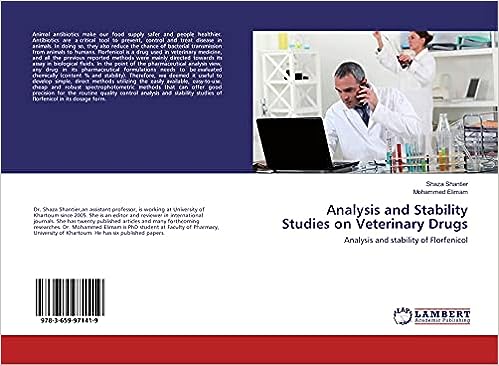A Comprehensive Guide to ICH Q1A(R2) for Stability Testing
Introduction
Pharmaceutical stability testing ensures that a drug maintains its quality, safety, and efficacy throughout its shelf life. The International Council for Harmonisation (ICH) guideline Q1A(R2) is the cornerstone for stability studies, offering detailed protocols for evaluating how environmental factors such as temperature, humidity, and light affect a drug product over time. This guideline is globally accepted, enabling pharmaceutical companies to streamline their stability programs and meet regulatory requirements across markets.
What Is ICH Q1A(R2)?
ICH Q1A(R2) is a globally harmonized guideline that
The guideline was created to harmonize stability testing requirements across regions, eliminating redundancy and promoting efficiency in global pharmaceutical development. By adhering to ICH stability guidelines, manufacturers can gain regulatory approval in diverse markets, including the United States, Europe, and Asia.
Core Objectives of ICH Q1A(R2)
ICH Q1A(R2) addresses several key objectives in stability testing:
- Predicting Shelf Life: By analyzing degradation trends, companies can accurately determine a drug’s expiration date.
- Defining Storage Conditions: The guideline establishes standardized conditions for different climatic zones.
- Ensuring Product Integrity: Identifying degradation pathways helps mitigate risks to drug safety and efficacy.
Key Elements of ICH Q1A(R2)
1. Stability Testing Protocols
ICH Q1A(R2) categorizes stability testing into three primary types:
- Long-Term Testing: Conducted under recommended storage conditions to evaluate shelf life.
- Accelerated Testing: Performed under harsher conditions to simulate long-term storage effects in a shorter timeframe.
- Intermediate Testing: Optional testing performed under less extreme conditions to provide additional data when significant changes are observed during accelerated testing.
2. Climatic Zones
The world is divided into four climatic zones based on environmental conditions:
- Zone I: Temperate regions with mild climates.
- Zone II: Subtropical regions with higher humidity.
- Zone III: Hot and dry areas.
- Zone IV: Hot and humid regions, further categorized into IVa and IVb.
These zones dictate storage and testing conditions, ensuring that products remain stable under the specific climates where they will be distributed.
3. Storage Conditions
ICH Q1A(R2) specifies standard storage conditions for stability testing:
- Long-Term Testing: 25°C ± 2°C / 60% RH ± 5% RH
- Accelerated Testing: 40°C ± 2°C / 75% RH ± 5% RH
- Intermediate Testing: 30°C ± 2°C / 65% RH ± 5% RH
4. Sampling Time Points
Sampling intervals are critical for monitoring trends in drug stability:
- Long-Term Studies: 0, 3, 6, 9, 12 months, and annually thereafter.
- Accelerated Studies: 0, 3, and 6 months.
Challenges in Stability Testing
Implementing stability testing programs in compliance with ICH Q1A(R2) can be challenging. Common issues include:
- Resource Intensity: Stability testing requires significant time, manpower, and financial investment.
- Regulatory Variations: While ICH Q1A(R2) is harmonized, some regional differences in interpretations can lead to complexities.
- Equipment Validation: Ensuring that stability chambers maintain precise temperature and humidity conditions is essential.
Applications of ICH Q1A(R2) Guidelines
ICH Q1A(R2) is not limited to finished drug products. Its applications include:
- Active Pharmaceutical Ingredients (APIs): Stability testing assesses how raw materials behave under different conditions.
- Biologics: Evaluates the stability of sensitive biological molecules like vaccines and monoclonal antibodies.
- Packaging: Ensures that packaging materials do not adversely affect drug stability.
Emerging Trends in Stability Testing
Technological advancements are reshaping stability studies, enhancing efficiency and accuracy:
- Predictive Analytics: Machine learning models predict long-term stability based on accelerated testing data.
- Automation: Robotic systems streamline testing processes, reducing human error.
- Digital Tools: Stability software for pharmaceuticals simplifies data analysis and regulatory submissions.
- Sustainability: Focus on eco-friendly packaging and reduced resource consumption during testing.
Best Practices for Implementing ICH Q1A(R2)
To maximize compliance and efficiency, companies should:
- Train Personnel: Ensure staff understand the requirements of ICH Q1A(R2) and its applications.
- Invest in Technology: Leverage automated systems and software to streamline testing processes.
- Validate Equipment: Regularly calibrate stability chambers to maintain precise conditions.
- Adapt Globally: Customize testing protocols to align with regional market requirements.
Conclusion
ICH Q1A(R2) is the foundation of modern stability testing, providing a robust framework for assessing the long-term quality of pharmaceutical products. Its emphasis on harmonization and scientific rigor ensures that medicines meet global safety and efficacy standards. By adhering to these guidelines and embracing technological innovations, pharmaceutical companies can enhance their development processes, gain regulatory approval in diverse markets, and ultimately improve patient outcomes.
